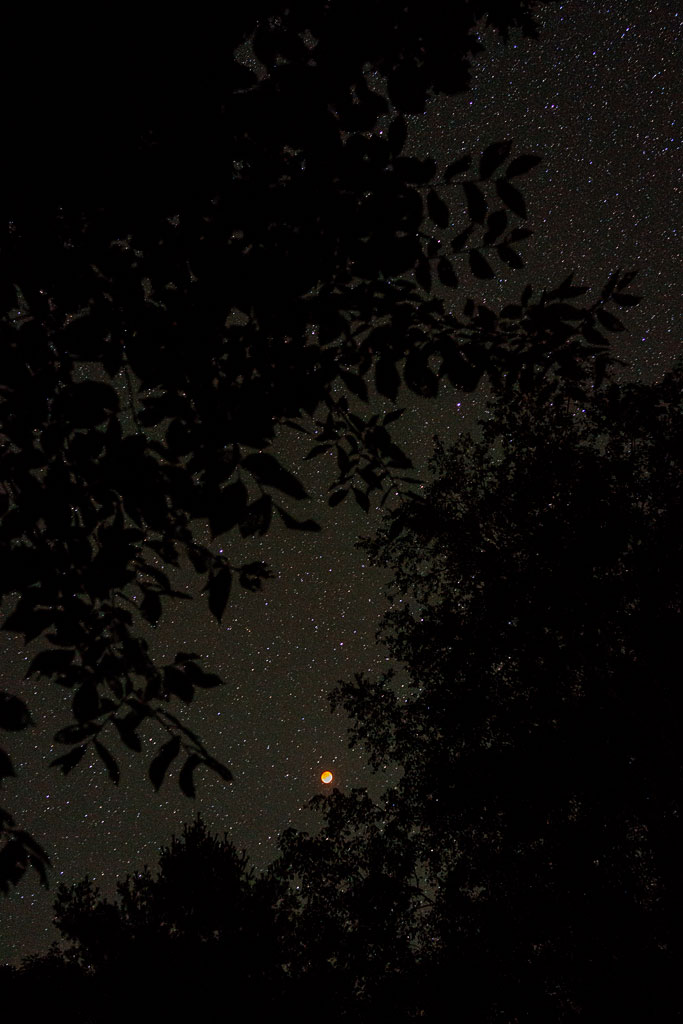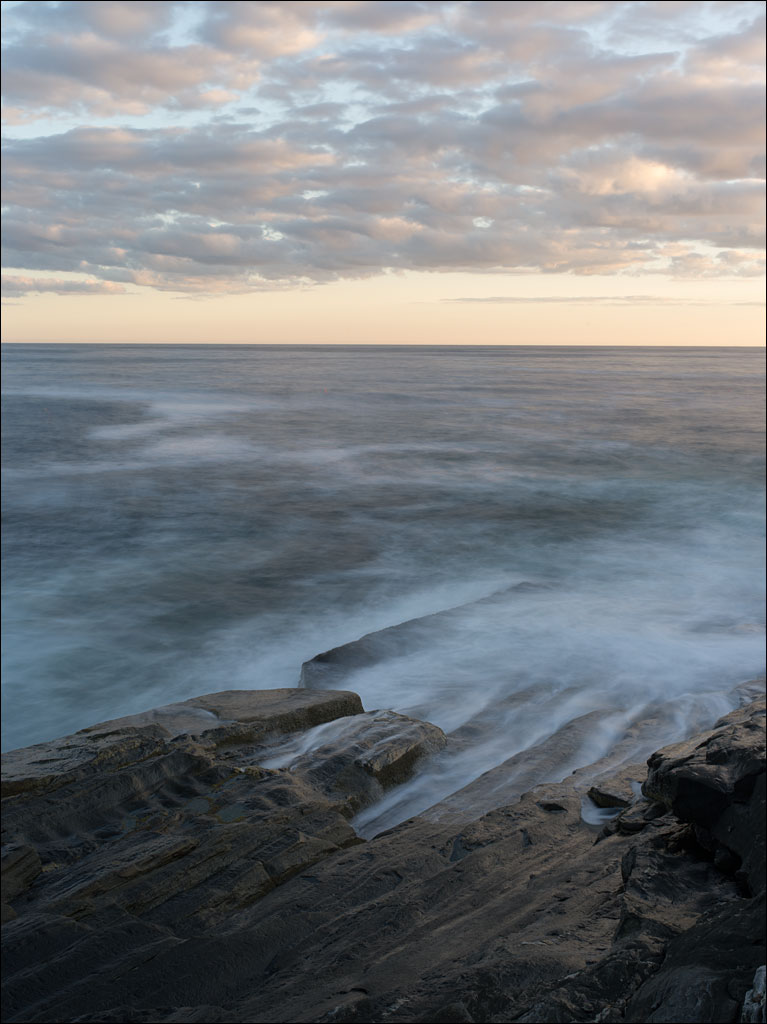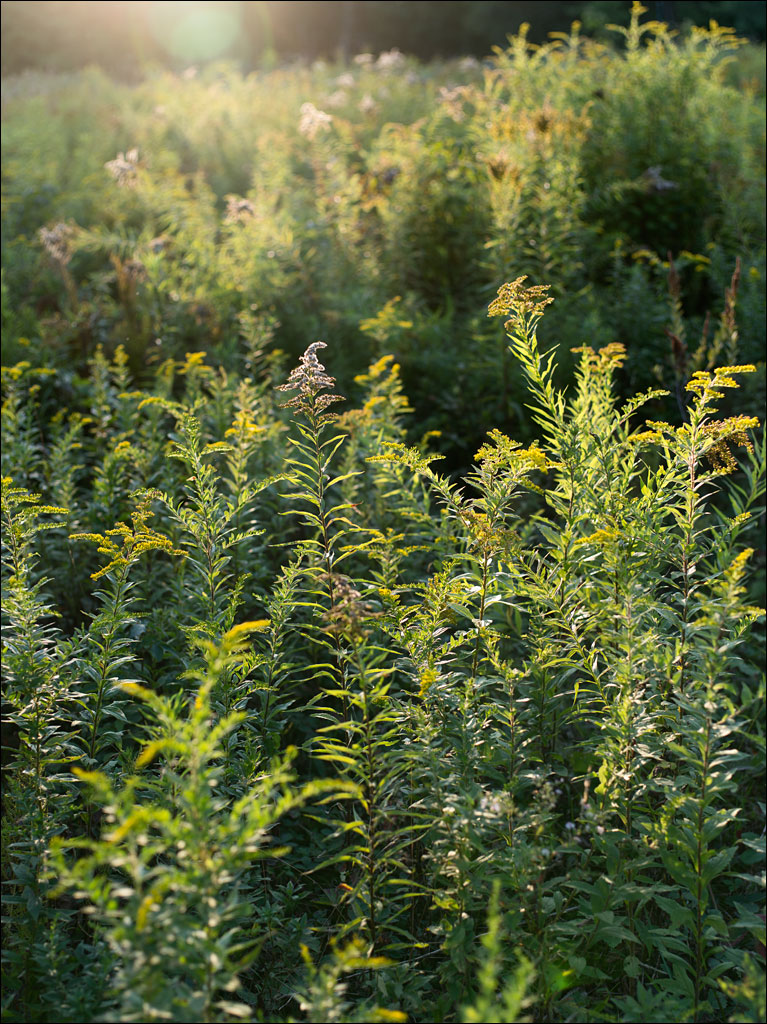 Inspired by my maple leaves, this images represents the spectrum of the Red Maple tree. These colors can be present at one time throughout the foliage. Click on the image for a larger view.
Inspired by my maple leaves, this images represents the spectrum of the Red Maple tree. These colors can be present at one time throughout the foliage. Click on the image for a larger view.
Tag Archives: Nature
Fall 2015
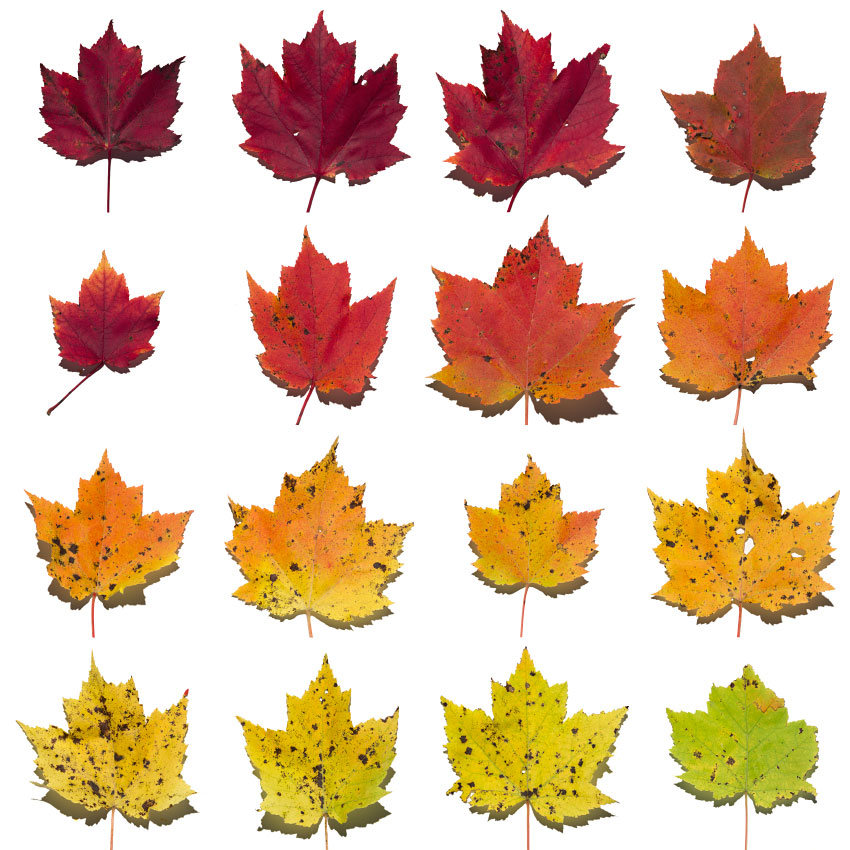 These leaves are from a single red maple tree in our garden—all taken at the same time. This tree is usually one of the first to show its fall foliage. Click on the image for a larger view. If you would like to see the tree… Continue reading
These leaves are from a single red maple tree in our garden—all taken at the same time. This tree is usually one of the first to show its fall foliage. Click on the image for a larger view. If you would like to see the tree… Continue reading
Moon and Stars
A Disappearing Moon
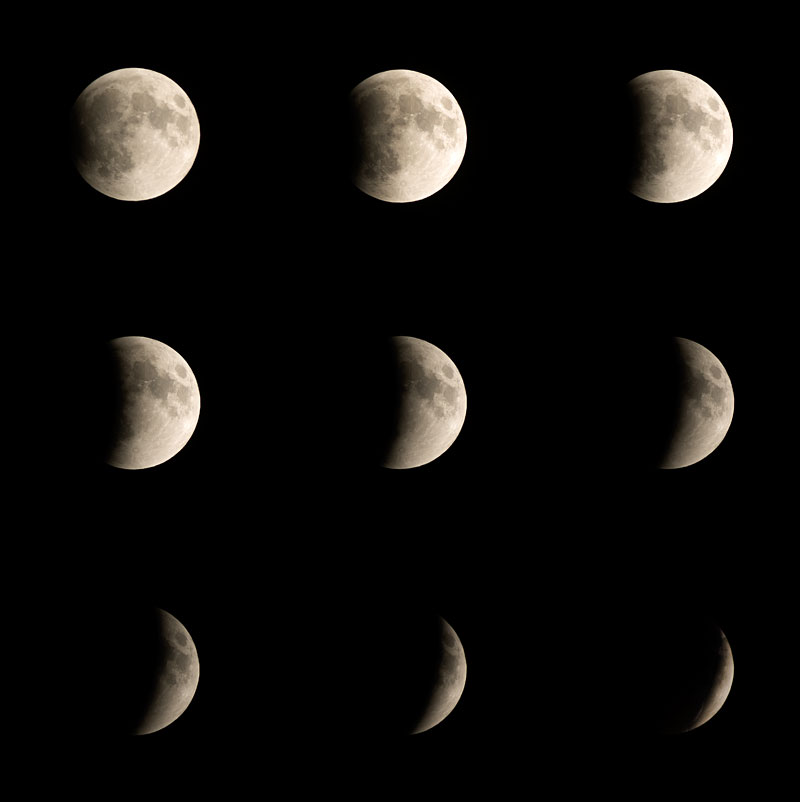 Last night, the moon slipped into the shadow of the Earth. It took about an hour to hide our satellite, which spent another forty five minutes in the shade of our planet before slowly emerging into the light of the sun. Click on the image for a larger view.
Last night, the moon slipped into the shadow of the Earth. It took about an hour to hide our satellite, which spent another forty five minutes in the shade of our planet before slowly emerging into the light of the sun. Click on the image for a larger view.
NOTE: if you know how to cross your eye to fuse stereo pairs, this image is quite dimensional.
More than Meets the Eye
 Cameras imitate human vision. Color is purely a human response to light: it does not actually exist in nature. How far we see in the electromagnetic spectrum, we call that range light, is simply a response of our biology.
Cameras imitate human vision. Color is purely a human response to light: it does not actually exist in nature. How far we see in the electromagnetic spectrum, we call that range light, is simply a response of our biology.
But eyes are not simply tiny cameras. Our vision is a complex system. Part of the retina of our eyes (rods) only sees luminance—how bright things are. Part (cones) only sees color, or, maybe more accurately, differences in color. These signals are transmitted to our brain where it recreates an image of the world. But even in our brain, luminance and color are processed in entirely different areas. So while our experience is a unified vision of a color world (the middle image), the reality is part of our brain is processing luminance (the left image) and another part color (the right image).
We are really not that good at seeing color, which is a late evolutionary adaptation (many animals do not see in color). But it is important. The sky is rather dull in simple luminance—the orange sky at the horizon has the same brightness, or equiluminant, as the blue sky through the cloud. The addition of color in our perception creates far more separation. But color alone lacks structure and detail—color acuity is low in human vision, which why it can be really hard to read red text on a green background when both colors are equiluminant. Click on the image for a larger view.
Dusk at Pemaquid Point
Garden Mystery
 We have a mystery growing in our garden. We did not plant this squash or pumpkin or whatever it is. Most likely it is from the seed of a hybrid squash we planted the year before, but is not growing to type. It is big and looks healthy. Not right to harvest, but when it ripens, we will certainly take a closer look. Click on the image for a larger view.
We have a mystery growing in our garden. We did not plant this squash or pumpkin or whatever it is. Most likely it is from the seed of a hybrid squash we planted the year before, but is not growing to type. It is big and looks healthy. Not right to harvest, but when it ripens, we will certainly take a closer look. Click on the image for a larger view.
Sweet Crab Harvest
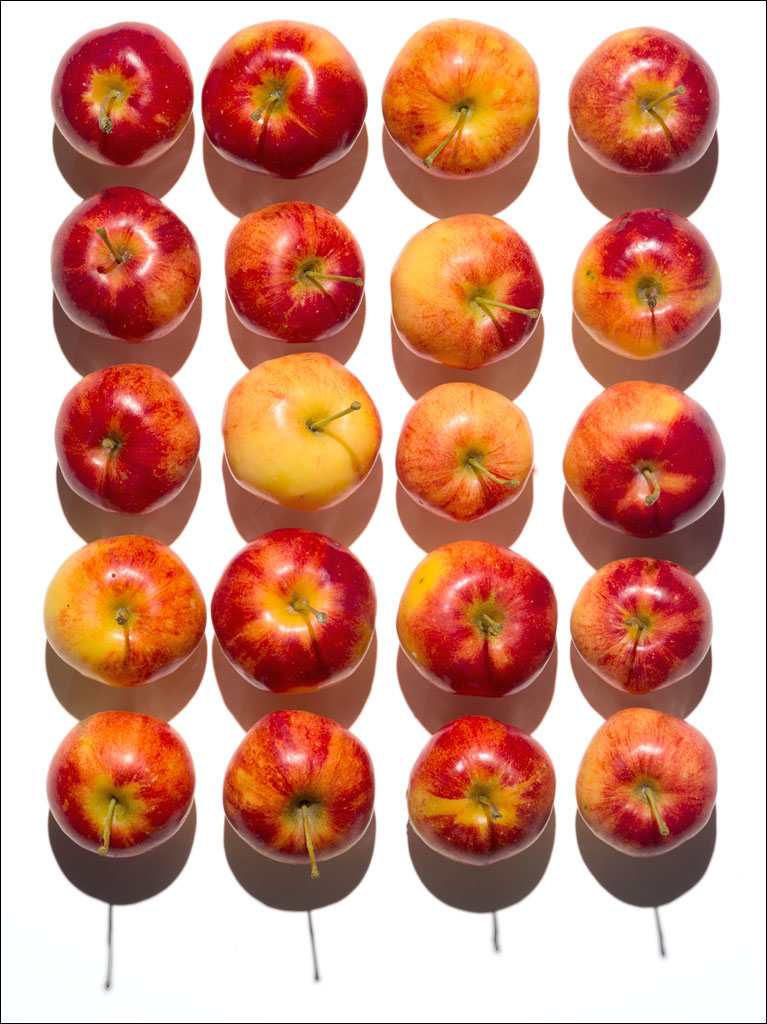 We had a great harvest of our Sweet Crab Apples this year. We have found this to be a great apple to have. While they are tart eaten fresh, once cooked, they have a wonderful sweetness to them. We dry some and turn some into sauce. Click on the image for a larger view.
We had a great harvest of our Sweet Crab Apples this year. We have found this to be a great apple to have. While they are tart eaten fresh, once cooked, they have a wonderful sweetness to them. We dry some and turn some into sauce. Click on the image for a larger view.
Golden Hour
Taking up Residence
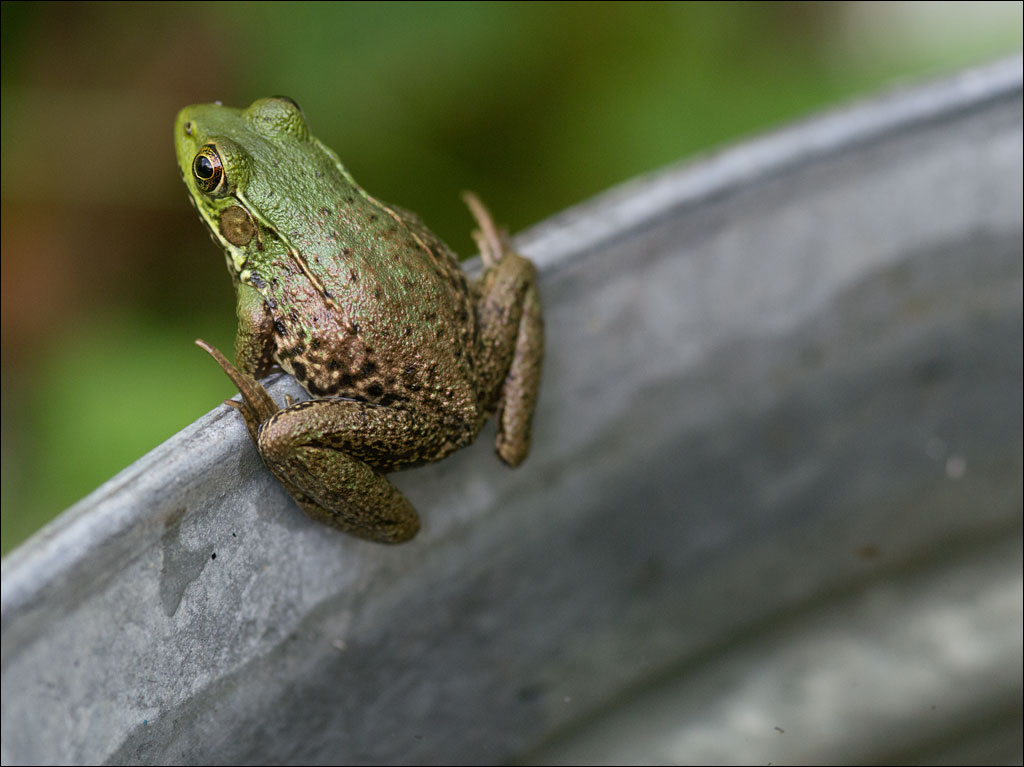 The galvanized steel bucket in our garden has a new resident. The bucket is full of rain water and our friend is either swimming or perched on the rim. The mystery is how the little fellow figured out it had water in it—he (or she) is a little short to be able to see into the bucket from the ground. Click on the image for a larger view—its eye is amazing.
The galvanized steel bucket in our garden has a new resident. The bucket is full of rain water and our friend is either swimming or perched on the rim. The mystery is how the little fellow figured out it had water in it—he (or she) is a little short to be able to see into the bucket from the ground. Click on the image for a larger view—its eye is amazing.

